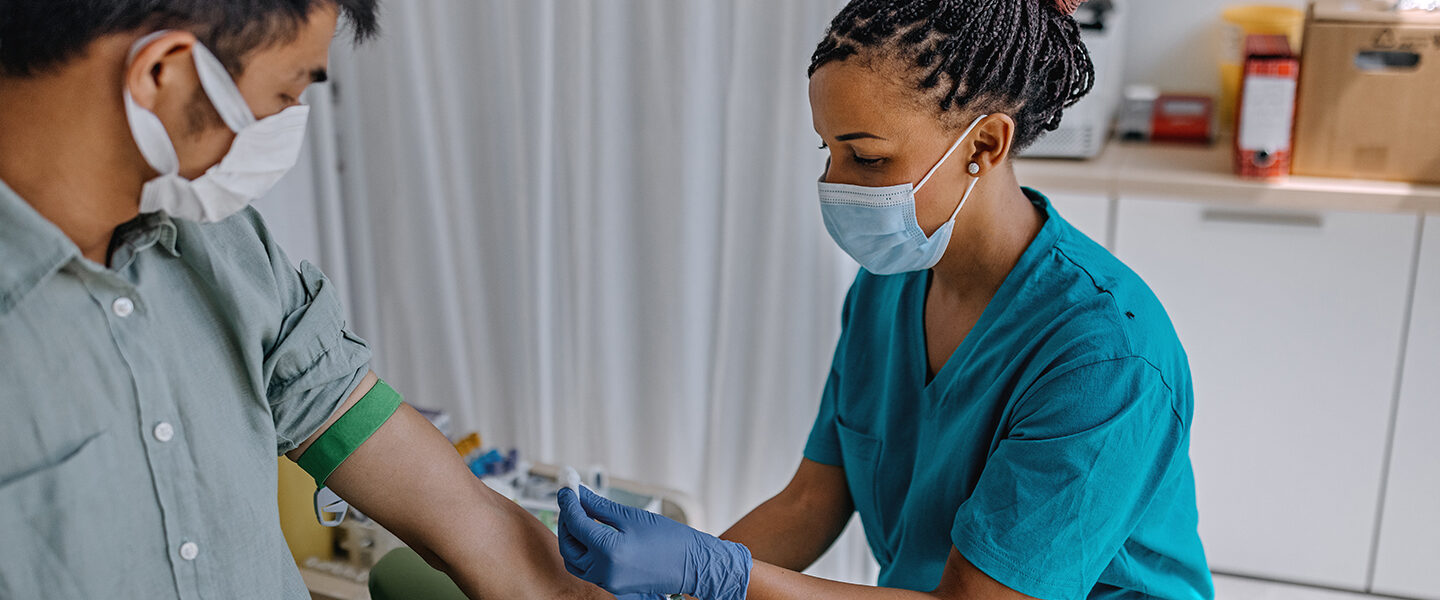Fascination About Northeast Medical Institute - New Haven Campus Phlebotomy Course & Cna Class
Fascination About Northeast Medical Institute - New Haven Campus Phlebotomy Course & Cna Class
Blog Article
A Biased View of Northeast Medical Institute - New Haven Campus Phlebotomy Course & Cna Class
Table of ContentsThe Facts About Northeast Medical Institute - New Haven Campus Phlebotomy Course & Cna Class RevealedNortheast Medical Institute - New Haven Campus Phlebotomy Course & Cna Class Fundamentals ExplainedRumored Buzz on Northeast Medical Institute - New Haven Campus Phlebotomy Course & Cna ClassNortheast Medical Institute - New Haven Campus Phlebotomy Course & Cna Class Fundamentals ExplainedThe Single Strategy To Use For Northeast Medical Institute - New Haven Campus Phlebotomy Course & Cna ClassAn Unbiased View of Northeast Medical Institute - New Haven Campus Phlebotomy Course & Cna Class
However, using such devices ought to be accompanied by various other infection prevention and control methods, and training in their use. Not all safety and security devices are applicable to phlebotomy. Prior to choosing a safety-engineered device, users need to extensively investigate offered tools to determine their suitable usage, compatibility with existing phlebotomy techniques, and efficiency in protecting staff and patients (12, 33).For settings with low sources, cost is a motoring element in purchase of safety-engineered tools. Where safety-engineered gadgets are not available, skilled usage of a needle and syringe is appropriate.
In the blood-sampling room for an outpatient division or center, provide a comfy reclining couch with an arm remainder.
Northeast Medical Institute - New Haven Campus Phlebotomy Course & Cna Class - An Overview
Guarantee that the indicators for blood tasting are clearly specified, either in a composed protocol or in documented directions (e.g. in a laboratory form). Accumulate all the equipment needed for the procedure and location it within secure and simple reach on a tray or cart, making certain that all the products are clearly noticeable.
Where the individual is adult and mindful, adhere to the actions outlined below. Present on your own to the patient, and ask the individual to mention their full name. Examine that the laboratory form matches the client's identity (i.e. match the person's information with the laboratory form, to make sure precise identification). Ask whether the license has allergic reactions, anxieties or has actually ever before fainted during previous injections or blood attracts.
Make the patient comfy in a supine setting (if possible). The person has a right to decline a test at any kind of time prior to the blood sampling, so it is important to make sure that the person has actually understood the treatment - CNA Classes.
Getting The Northeast Medical Institute - New Haven Campus Phlebotomy Course & Cna Class To Work
Extend the person's arm and examine the antecubital fossa or lower arm. Situate a blood vessel of an excellent size that shows up, straight and clear. The diagram in Section 2.3, reveals common settings of the vessels, however numerous variations are feasible. The median cubital capillary exists in between muscle mass and is normally one of the most very easy to pierce.
DO NOT insert the needle where veins are drawing away, due to the fact that this increases the chance of a haematoma. The vein ought to be visible without applying the tourniquet. Locating the vein will assist in establishing the proper dimension of needle. Use the tourniquet regarding 45 finger sizes over the venepuncture website and re-examine the capillary.
Samplings from central lines bring a threat of contamination or incorrect research laboratory test outcomes. It is acceptable, yet not optimal, to attract blood specimens when very first presenting an in-dwelling venous device, prior to linking the cannula to the intravenous fluids.
The 15-Second Trick For Northeast Medical Institute - New Haven Campus Phlebotomy Course & Cna Class
Failing to permit sufficient call time raises the threat of contamination. DO NOT touch the cleaned up site; in particular, DO NOT put a finger over the blood vessel to lead the shaft of the revealed needle.
Ask the person to create a hand so the veins are more prominent. Enter the vein promptly at a 30 level angle or less, and proceed to present the needle along the capillary at the simplest angle of entrance - PCT Training. As soon as enough blood has actually been accumulated, launch the tourniquet BEFORE taking out the needle
All About Northeast Medical Institute - New Haven Campus Phlebotomy Course & Cna Class
Withdraw the needle delicately and apply gentle stress to the site with a tidy gauze or dry cotton-wool round. Ask the individual to hold the gauze or cotton woollen in location, with the arm expanded and raised. Ask the individual NOT to this post flex the arm, since doing so causes a haematoma.

The Best Guide To Northeast Medical Institute - New Haven Campus Phlebotomy Course & Cna Class
Do not press the syringe bettor because additional stress increases the threat of haemolysis. Where possible, keep televisions in a shelf and relocate the rack towards you. Inject downwards into the suitable coloured stopper. DO NOT eliminate the stopper since it will certainly launch the vacuum. If the example tube does not have a rubber stopper, infuse exceptionally slowly into the tube as reducing the pressure and velocity used to move the sampling minimizes the danger of haemolysis.

Report this page